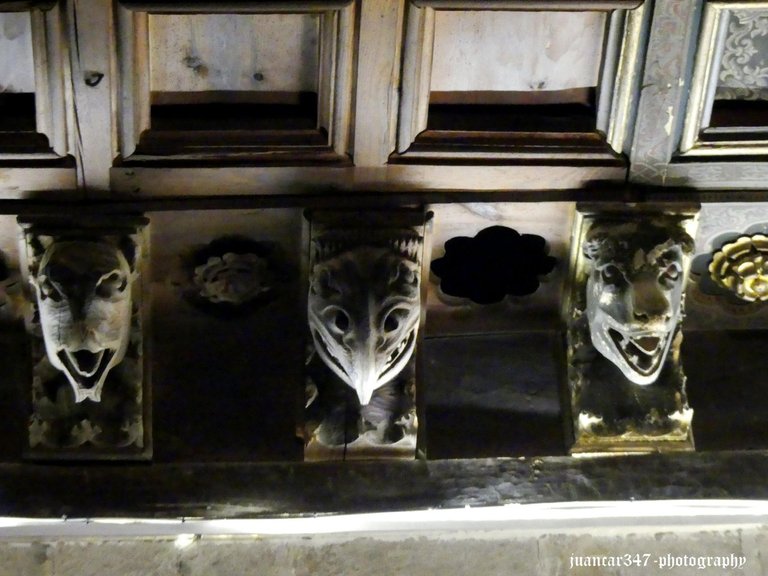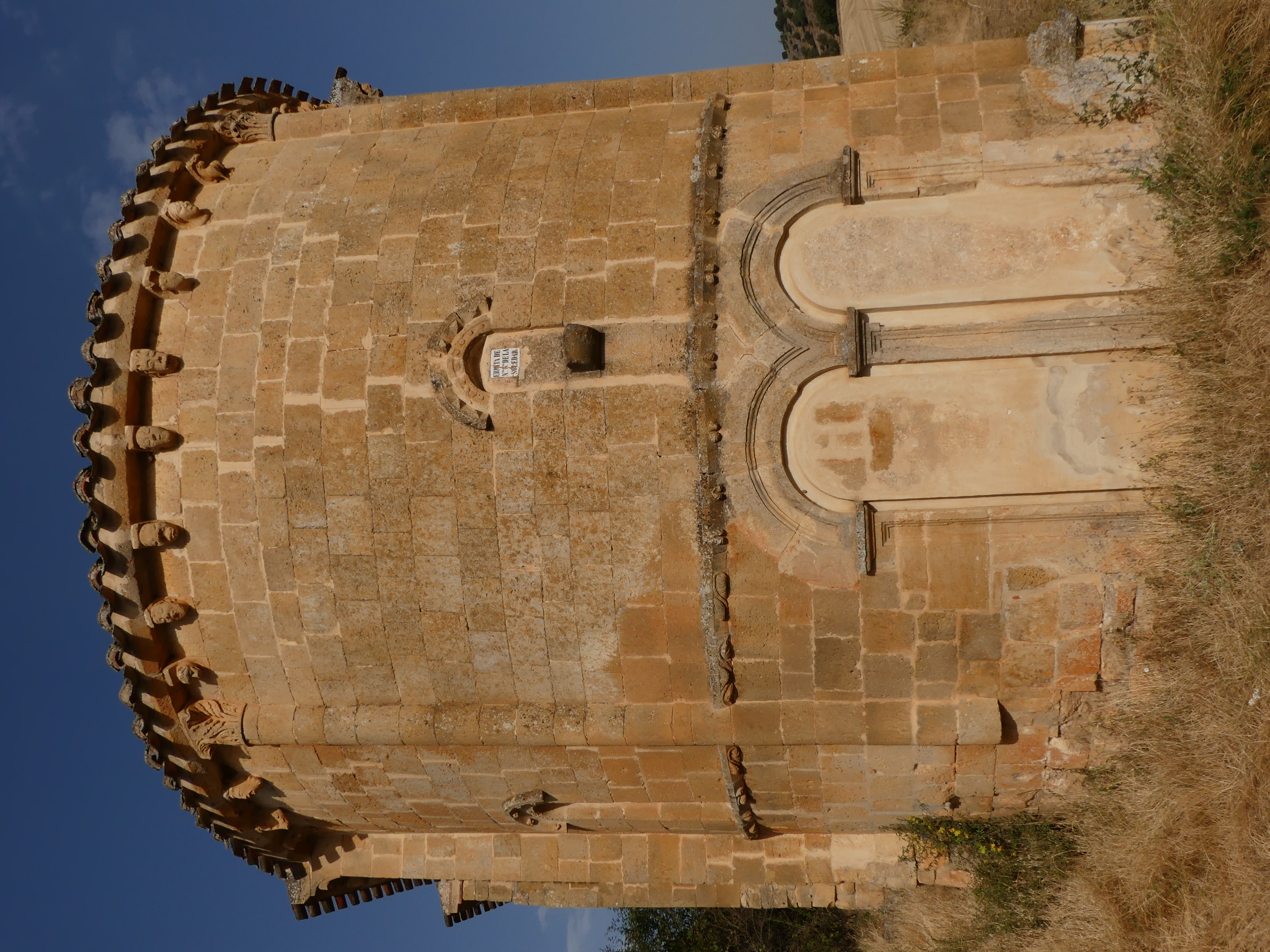a jewel of the so-called Elizabethan Gothic style - I would rather describe it as a Plateresque Gothic style - which is none other than its imposing church of Santa María la Real.
This is the first time I've encountered "Plateresque" in our community. So, naturally, I googled the word and it said that the terminology relates to an artistic movement, particularly architectural in nature, and was conceived in Spain during the late 15th century. No wonder the church details, especially the ones dominating the upper portion of its main doors, appear surreal - as if the work freshly came out from a sculptor's factory. The extreme intricacies of the elaborately carved elements are absolutely mind-blowing in that they exude a mesmerizing effect.
Furthermore, those sculpted faces wedged on the upper ceiling (or might be somewhere else) surely look eerie and gave me the creeps. And while I was scratching my head, I pondered that they're probably gargoyles since the church sports the Gothic style (please correct me if I'm wrong). And I'm wondering why they're situated within the interior space? Are those creatures suppose to be installed outside, to serve as guardians of the building? I'm simply curious. And I'm itching to learn more. Here's the photo:

Interesting questions that you ask me. We will go by parts. This church, although it began to be built in the mid-fourteenth century, was completed in the fifteenth century, at a time, in my opinion, in which the Gothic was already giving way to other artistic styles, such as the Renaissance or the Plateresque, the latter style, of which there are numerous examples and although I have photographs and have written something about it, I recommend that you look for a very interesting one: the front of the Colegio de San Gregorio, in Valladolid. On the question you ask me about photography, they are not gargoyles, although like these, they also fulfill a symbolic function. I would say that they are reminiscent of Romanesque art, that in addition to their symbolic function on the unconscious of the medieval faithful, since they generally referred to sins, such as lust and other capitals, they also had a technical function: that of supporting the coupling of the roofs of the churches. I think you will understand it better with this photograph of a Romanesque church and you will see what I am talking about. The only difference is that these from Santa María la Real are made of wood and inside the nave, supporting the framework on which the choir sits. Just in case, I present you some photographs of a Romanesque hermitage in ruins, where I think you will see everything clearer. Always a pleasure to comment with you.

Interesantes las cuestiones que me planteas. Iremos por partes. Esta iglesia, aunque se comenzó a levantar a mediados del siglo XIV, se terminó de construir en el siglo XV, en un momento, en mi opinión, en el que el gótico ya estaba dejando paso a otros estilos artísticos, como el renacentista o el plateresco, estilo éste último, del que hay numerosos ejemplos y aunque tengo fotografías y he escrito algo al respecto, te recomiendo que busques uno bastante interesante: la portada del Colegio de San Gregorio, en Valladolid. Sobre la cuestión que me planteas sobre la fotografía, no son gárgolas, aunque como éstas, también cumplen una función simbólica. Yo diría que son reminiscencia del arte románico, que además de su función simbólica sobre el inconsciente de los fieles medievales, pues generalmente hacían referencia a pecados, como la lujuria y otros capitales, también tenían una función técnica: la de hacer de soporte para el acople de los tejados de las iglesias. Creo que lo entenderás mejor con esta fotografía de una iglesia románica y verás de qué hablo. La única diferencia, es que estos de Santa María la Real, están hechos en madera y en el interior de la nave, haciendo de soporte del entramado sobre el que se asienta el coro. Por si acaso, te presento unas fotografías de una ermita románica en ruinas, donde creo que lo verás todo más claro. Siempre un placer comentar contigo.
Oh, excellent. Now I understand. Thank you so much for the needed enlightenment! At first impression, I thought those roof supports were gargoyles because of their striking facial features. However, learning that they're structural components for the building's roofing system, their important purpose has truly cemented their place in that landmark's architecture. Being symbolic capitals as well, their significance has also added to their complementary functions from a religious perspective. Have a fantastic week ahead @juancar347!